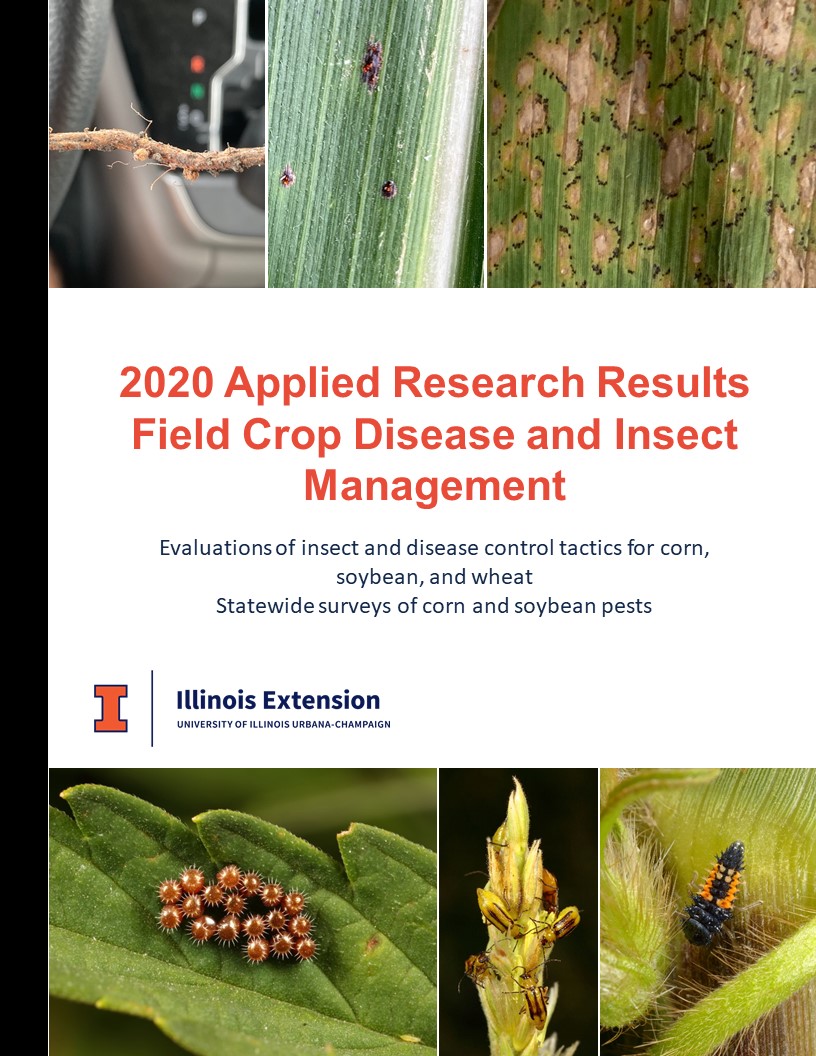ILSOYADVISOR POST
University of Illinois Applied Research Results Now Available
University of Illinois researchers publish an annual report of applied research conducted on insect and disease management in soybean and corn. The 2020 report is now available for free download here.

Highlights from the 2020 guide related to soybean management include the following:
- Surveys for soybean insects and diseases, including red crown rot, soybean gall midge (which was not found in Illinois in 2020), and the annual statewide survey of insect pests.
- Fungicide evaluations for control of frogeye leaf spot, white mold, and purple seed stain.
- Evaluations of seed treatments for control of Rhizoctonia root rot and soybean cyst nematode.
- Evaluation of initial and residual control of bean leaf beetle using foliar insecticides.
Below is a recap of the red crown rot survey funded by the Illinois Soybean Association.
This report serves as a resource to farmers, crop advisors, and others looking for unbiased evaluations of crop protection technology in soybean and other crops. In addition, yearly surveys provide a status update on established pests, and an early warning if and when new invasive pests arrive in Illinois. For questions about the guide, please contact Nick Seiter (nseiter@illinois.edu) or Nathan Kleczewski (nathank@illinois.edu).
2020 Illinois Red Crown Rot Survey
Whitney Welker and Nathan Kleczewski
The fungal pathogen that causes Red Crown Rot (RCR), Calonectria ilicicola, was identified for the first time in Illinois in 2018. This pathogen historically has been associated with warm climates and systems where soybean is rotated with legumes, especially peanut. In addition, the disease is becoming more important in Asia, especially China, Japan, Korea and Taiwan. It is interesting to observe this pathogen in Illinois, particularly in cooler regions experiencing prolonged winters. One issue with RCR is that it is a soilborne pathogen, which colonizes the roots of developing seedlings when conditions are warm and wet. Severe early season infection can outright kill emerging seedlings. However, plants that survive can have roots colonized and continue to grow and develop. As the plan matures, the fungus can produce a toxin, which is translocated to the foliage. This toxin accumulates, causes interveinal chlorosis/necrosis of foliage, eventually killing leaves prematurely and even causing plant death.
A survey was conducted in 2020t o assess the incidence of RCR in Illinoi. Certified Crop Advisers, agronomists, extension personnel, researchers and producers were asked to submit samples to the Kleczewski lab if RCR was suspected.
Out of 27 samples, 14 were either visually confirmed for RCR or confirmed using a molecular tool. These 14 fields were located across Madison, Pike, Sangamon, and St. Clair counties. The survey will be conducted again in 2021 to potentially identify more positive counties where the disease may be established.





Comments
Add new comment